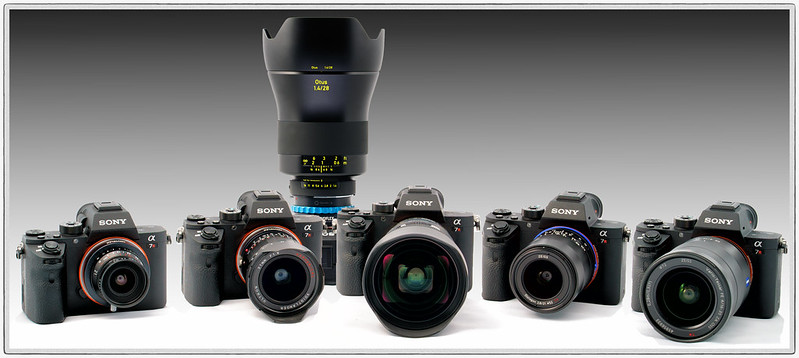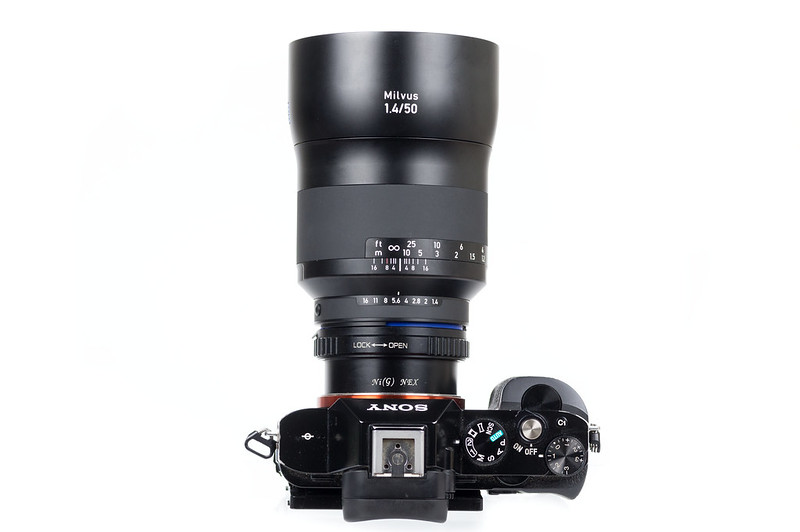End of 2015 / early 2016 a couple of new (ultra) wide angle lenses entered the full frame market. Time to compare them to some candidates you might already know by yourself or from an earlier review on this site. Comparison was done using the Sony A7RII:
From left to right:
- Voigtlander Color Skopar 21mm f/4 (M-mount adapted using Novoflex adapter)
- Voigtlander Ultron 21mm f/1.8 ASPH (M-mount adapted using Novoflex adapter)
- Zeiss Otus 28mm f/1.4 (in the background, ZF.2 version adapted with mechanical Novoflex adapter)
- Sigma Art 20mm f/1.4 (Canon EF mount, adapted using Metabones IV adapter)
- Zeiss Loxia 21mm f/2.8 (native FE-mount, new Distagon design)
- Sony/Zeiss FE 16-35mm f/4 OSS used at 21mm (native FE-mount)
To warm up with this focal length, let's see some examples. Clicking on the images will open the corresponding photo page providing higher resolutions (including full camera resolution):








